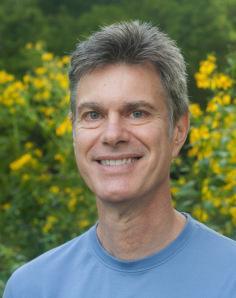
Photo by Larry Cammarata, Ph.D., Bali
For healing to occur, the conditions for healing need to be present. What are these conditions for healing? The teachings of Thich Nhat Hanh tell us that healing requires, “stopping, calming, and resting” (Hanh, 1999).
Stopping
Stopping involves dropping activity and making contact with your pain, distress, or suffering by focusing upon it. Focusing upon what stresses you might seem like the last thing you would ever want to do; many people have been conditioned to try to control or avoid what is distressing to them. In the context of mindfulness practice, the distress can become an object of meditation. However, this process is not about analysis or formulating a strategy to make the pain go away. Rather, this is about establishing an open, kind, and aware connection to your body-mind with acceptance, and without expectation or striving.
Calming
Calming first requires the recognition that you are suffering, in pain, or otherwise distressed. If you can’t see it and acknowledge it, there will be nothing to calm.
Recognition is supported by courage and openness, which are antidotes to denial and constriction. Once you have recognized the object of your distress, the next step is accepting it, which is different than being resigned to it or liking it. Acceptance is about being with reality on reality’s terms, without pushing a painful reality away by attempting to avoid or control your situation. To deepen the process of calming, Thich Nhat Hanh recommends embracing pain, as a loving mother would attend to a crying infant in distress. He further encourages, “looking deeply” into the nature of our distress, so that we may develop understanding and insight about its origins (Hanh, 1999). For example, while recognizing and even calming a sense of irritability might be easily possible for many individuals, understanding the causes and conditions associated with the irritability may not be possible without creating the space needed for looking deeply into it. Looking deeply may reveal that your irritability has its roots in worry over financial concerns, grief over the loss of a loved one, or some other condition that is unique to your life situation.
Resting
Resting in a state of present-centered awareness and acceptance is the essential mindfulness orientation that supports health and wellbeing. Once our distress or pain has been calmed and understood, we can rest without being so preoccupied by the past or future. Mindfulness meditation provides such a restful wakefulness, which can be accomplished while seated, walking, standing, or lying down. Relaxing the body by softening the belly and breathing in a steady, slow way can support the process of resting. To illustrate the significance of resting, Thich Nhat Hanh uses an example of a wounded animal in a forest that is likely to rest for days to restore its health and vitality (Hanh, 1999). This wisdom also resides within human beings, although we are often too distracted and swept away by the pace of our lives to fully appreciate it.
Healing
While resting is a precondition for healing to occur, we must first stop and calm ourselves before we can attain a deep rest. Healing is not necessarily about a specific outcome such as a cure for an illness. In this context, healing is about embracing the wholeness, acceptance, and kindness that is always available to us whether we are angry, fearful, grieving, or facing a life threatening illness. We don’t have to look for wholeness, acceptance, and kindness. When we are open and attentive, these states of being often find us!
Healing touches others
Your willingness to take the time to stop, calm, and rest in support of your own healing will touch others in unseen ways. The need for healing in the world is undeniable. Engaging in this healing process is like planting a seed for more healing to grow in your family, workplace, close relationships, and beyond. I encourage you to tend to that seed with love, the universal nourishment that is a life affirming natural resource that cannot be depleted.
Reference
Hanh, T. N. (1999). The heart of the buddha’s teaching: Transforming suffering into peace, joy, and liberation. New York, NY: Broadway Books.

Larry Cammarata, Ph.D.,
Photo of Larry Cammarata, Ph.D. by Emily Nichols Photography at http://emilynicholsphotography.com
For more information about Dr. Larry Cammarata go to www.Mind-BodyWellness.org.
To receive our Mind Body Medicine Network, LLC newsletters and future blogs: http://bit.ly/13J8D4V
(with contributing editors, Heather Butts, J.D., MPH, MA, Linda Cammarata, RN, RYT, and Ed Glauser, M.Ed., N.C.C., LPC)

www.mindbodymedicinenetwork.com

